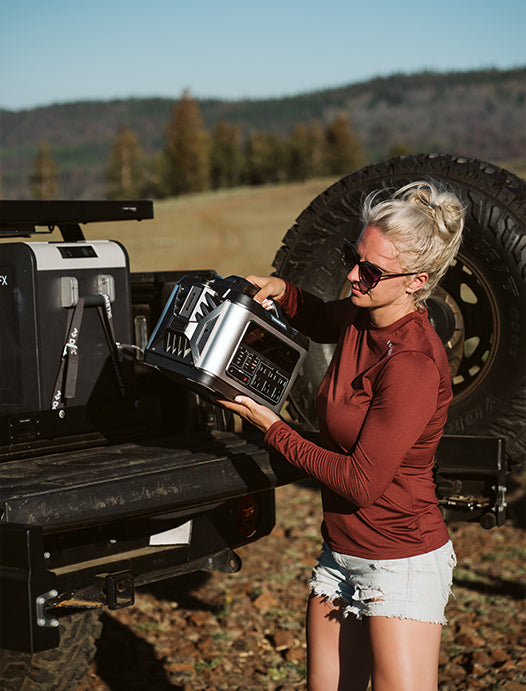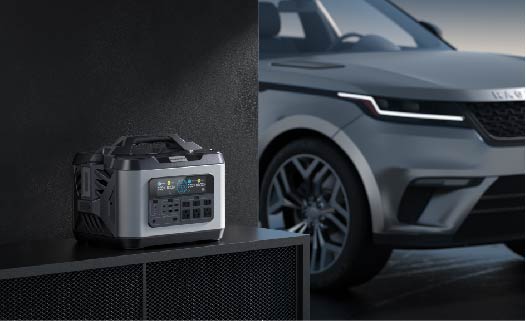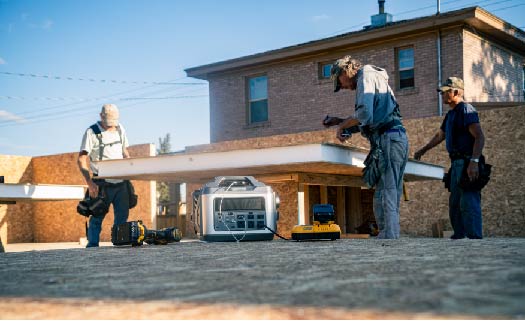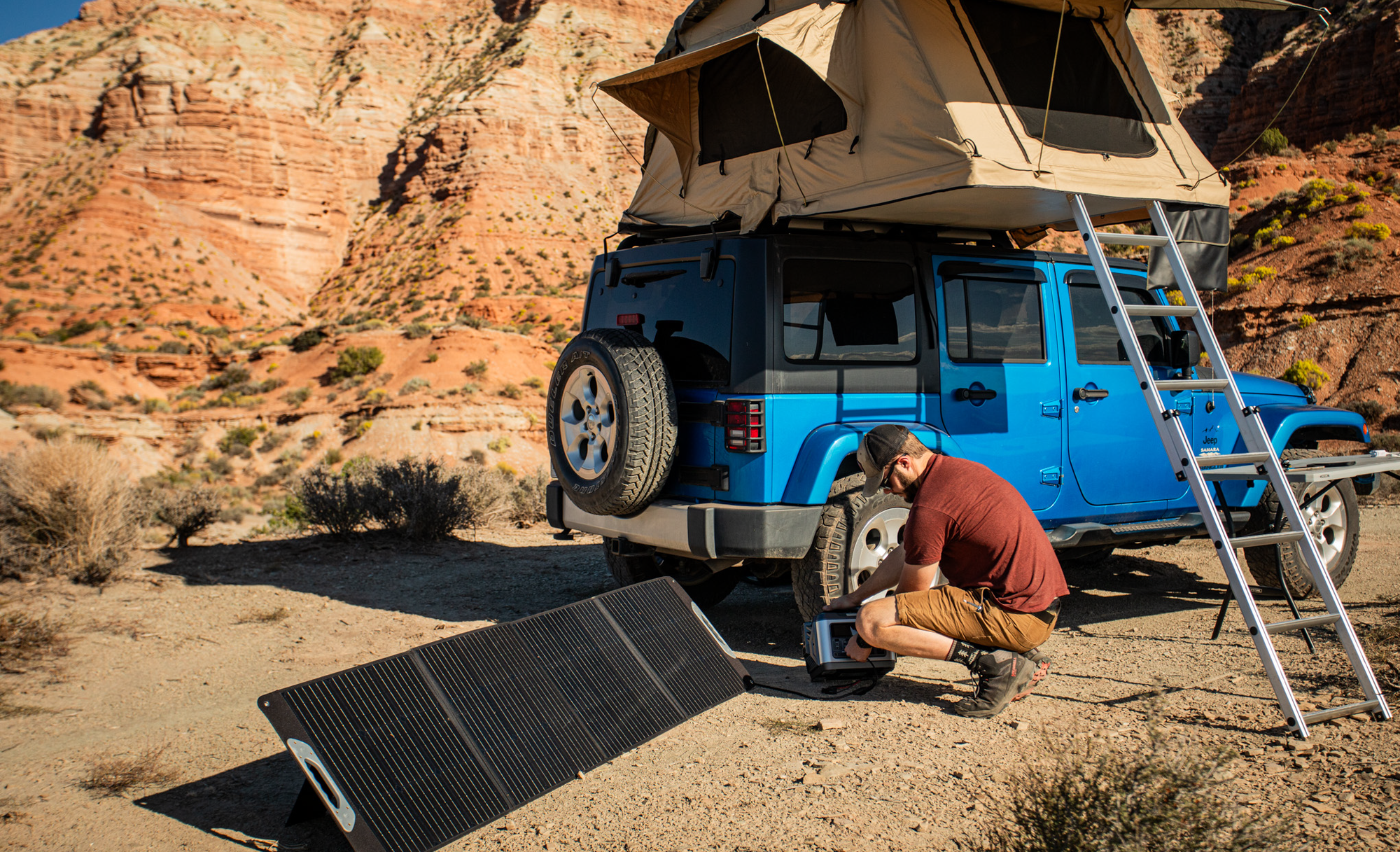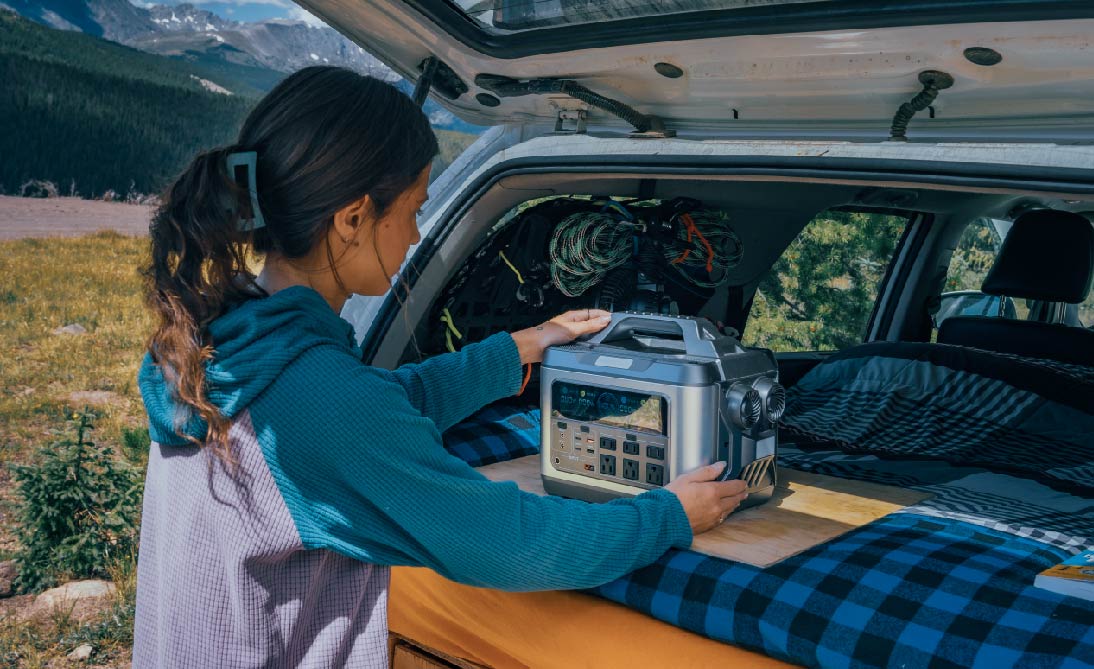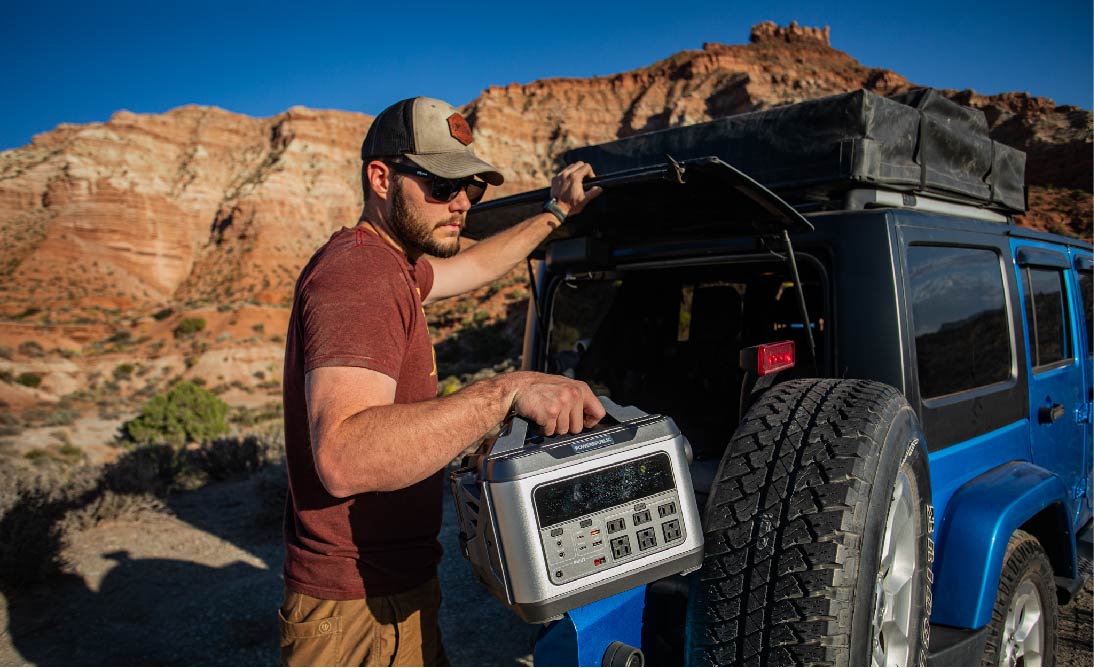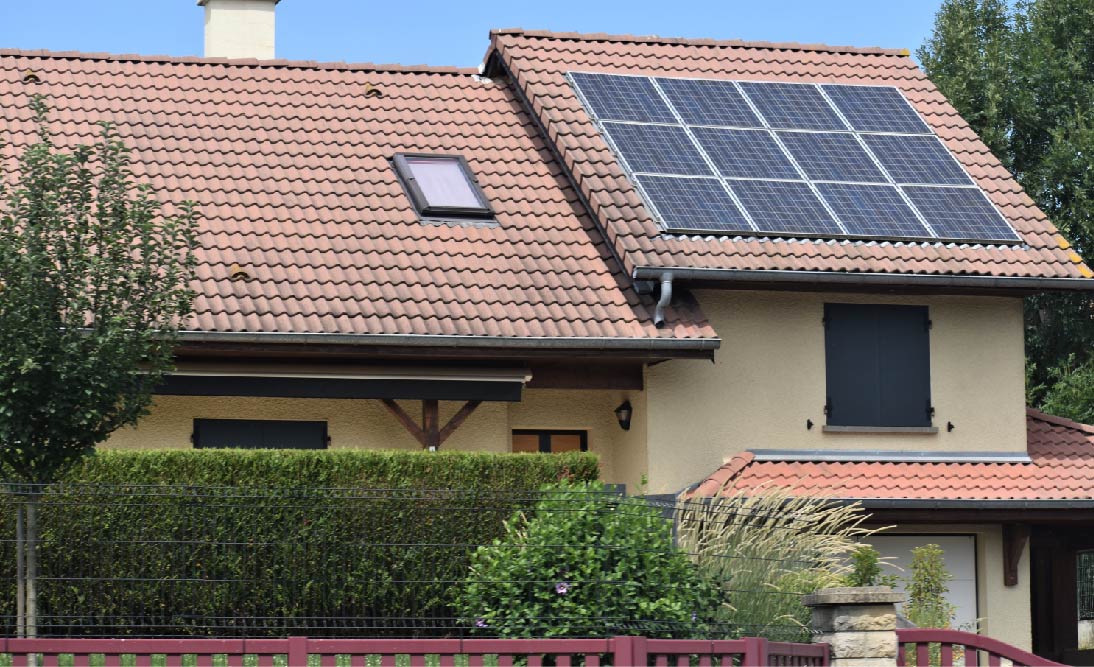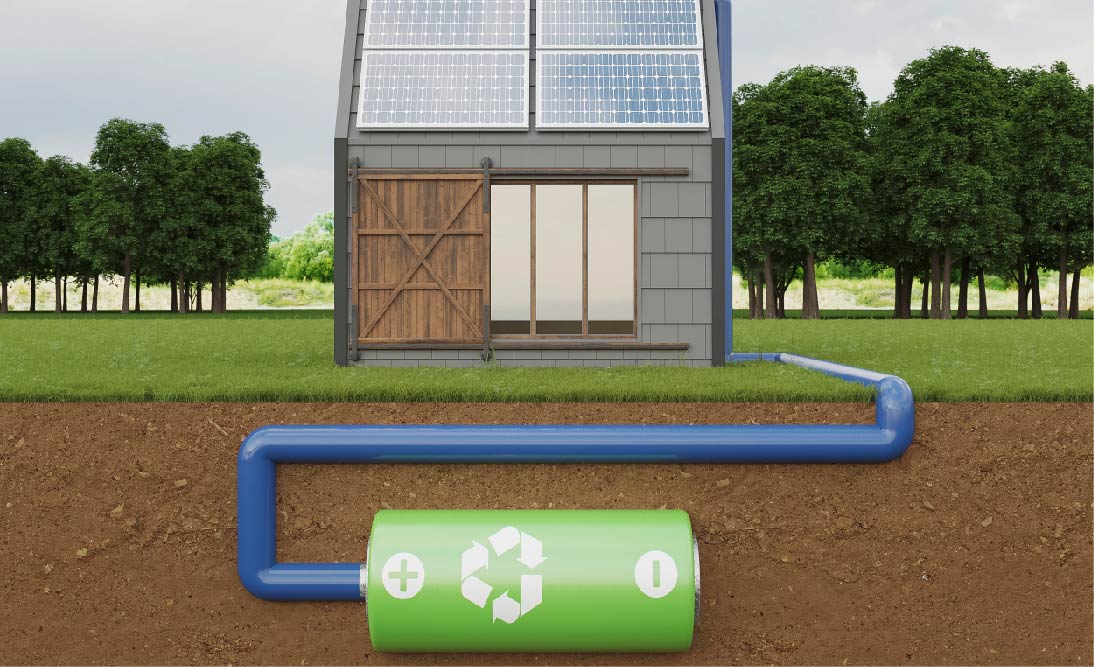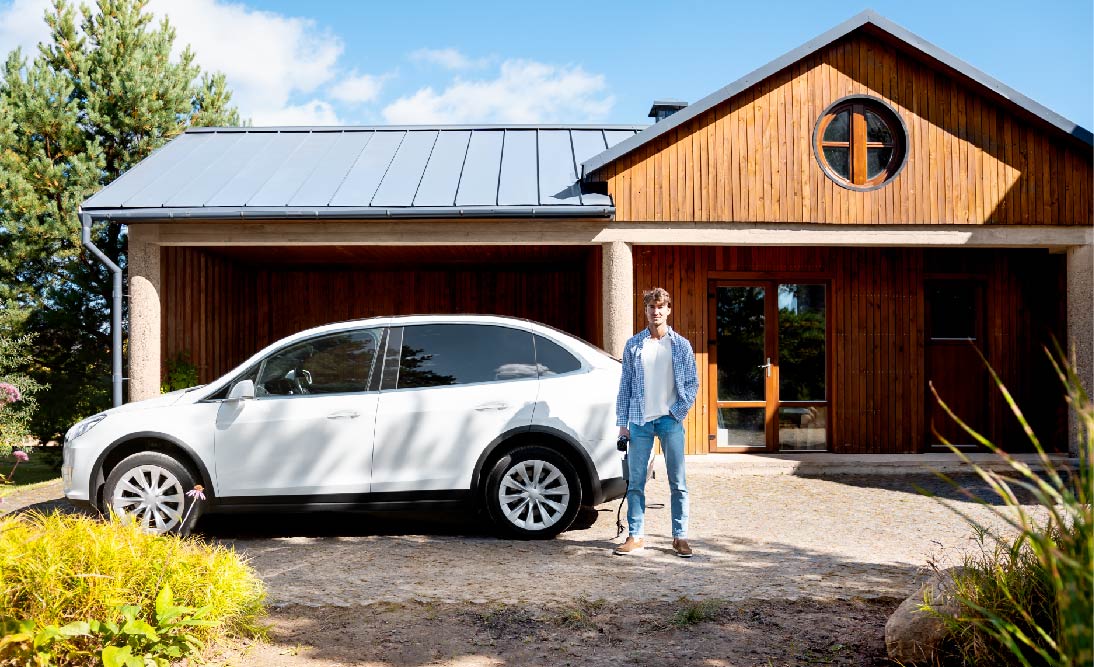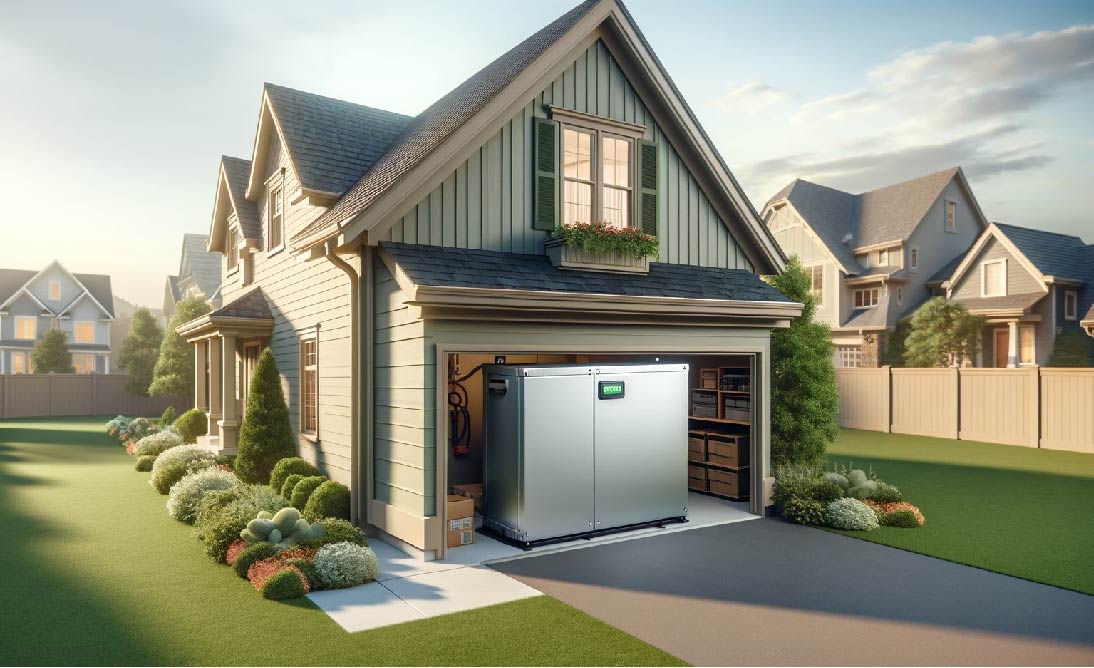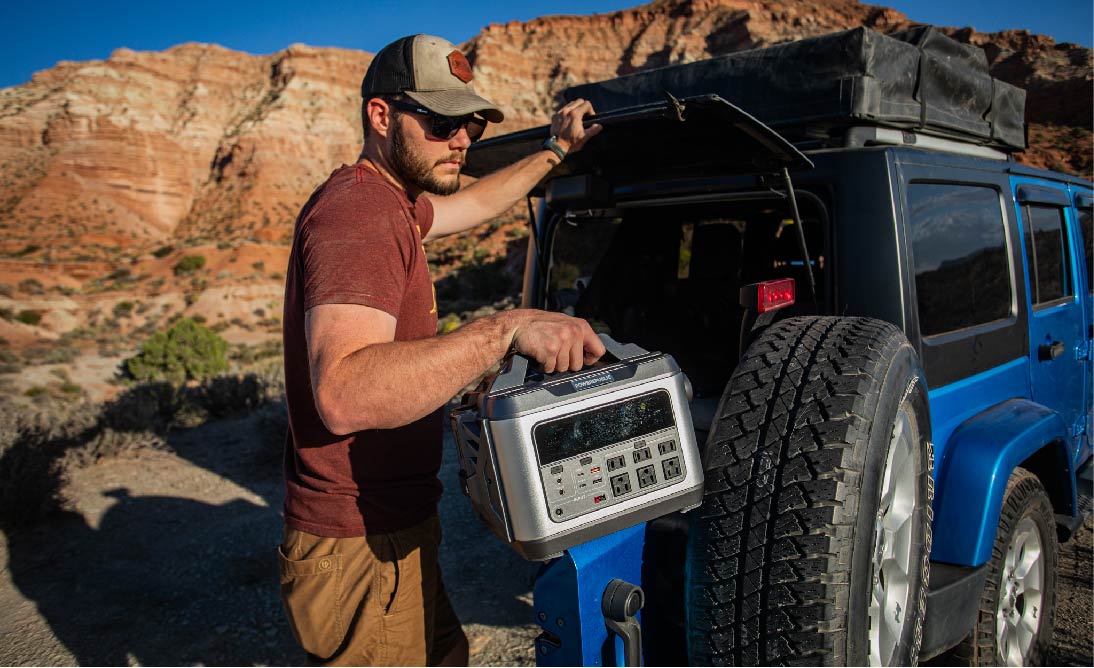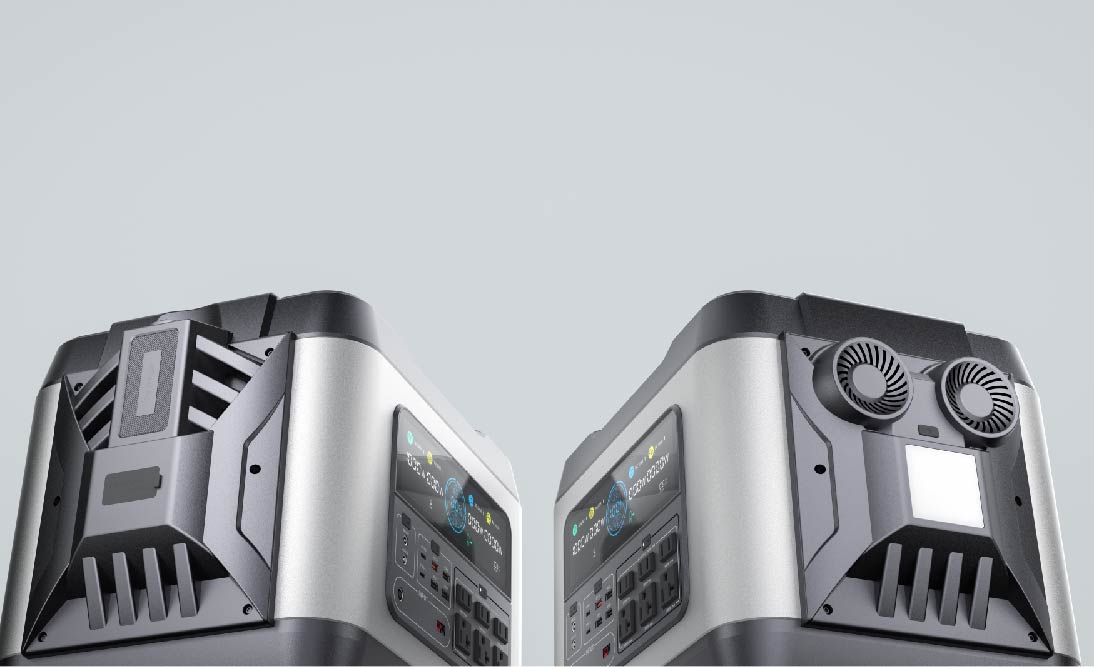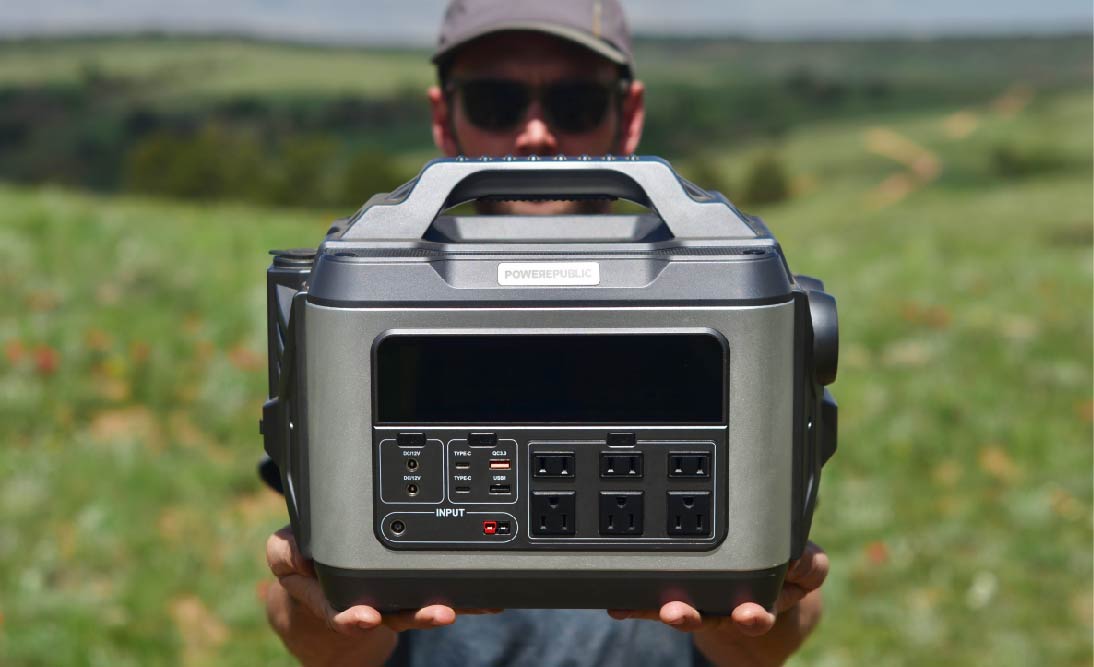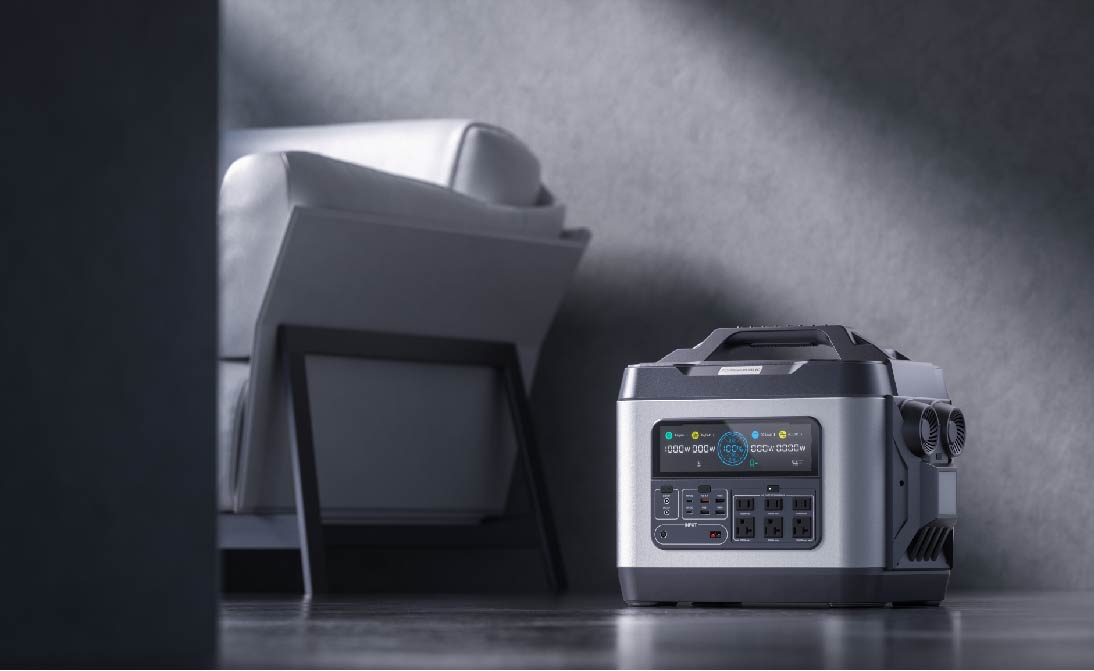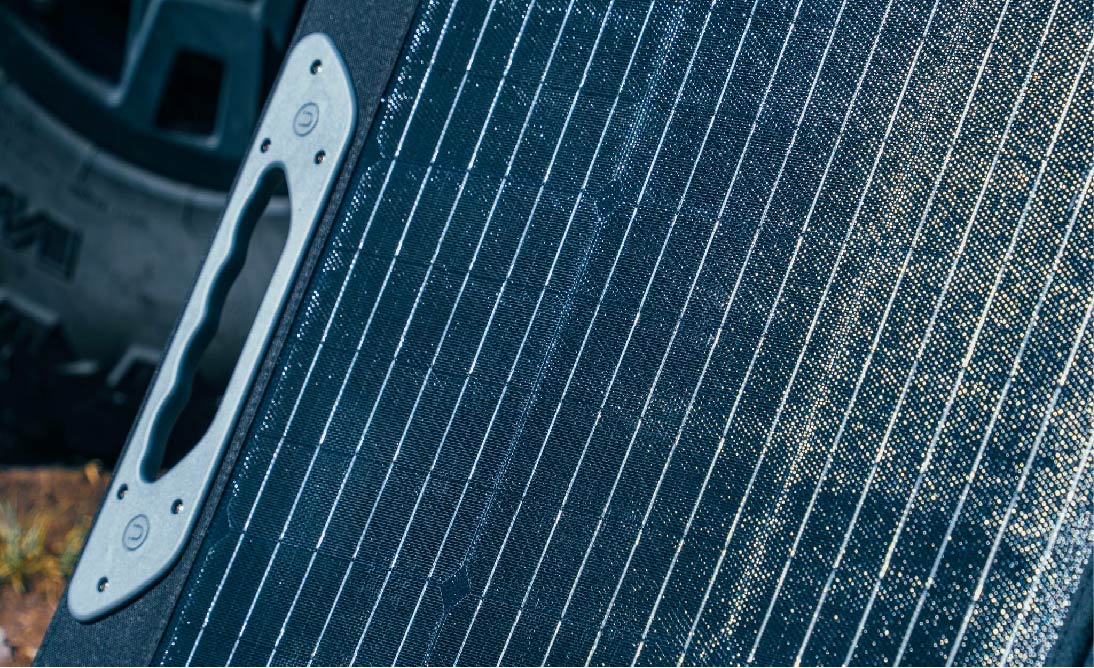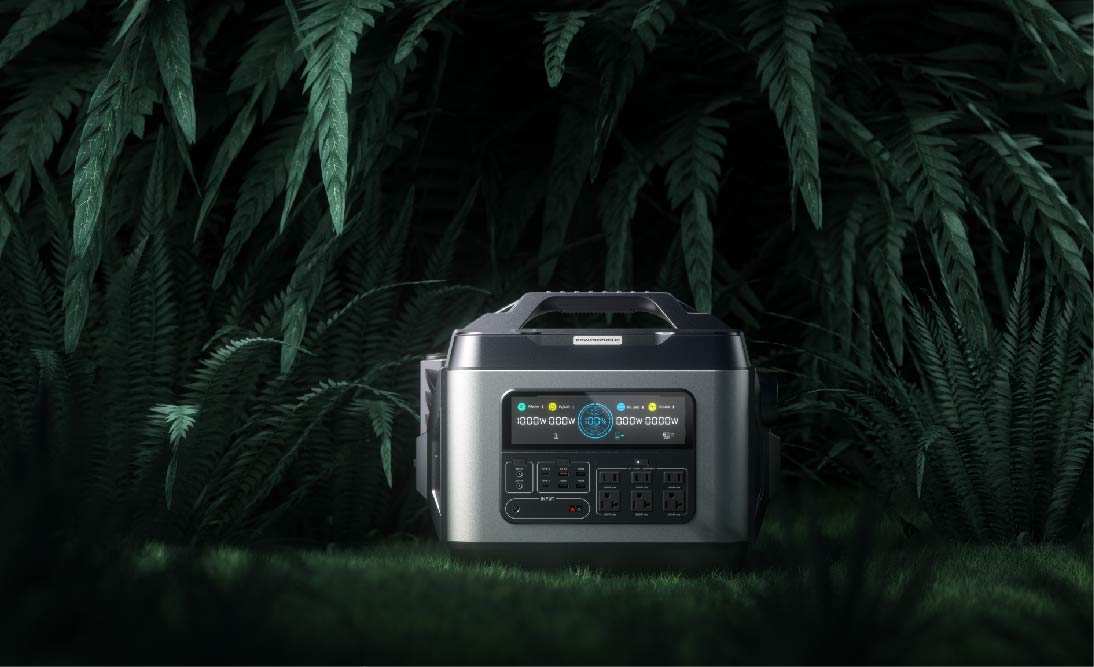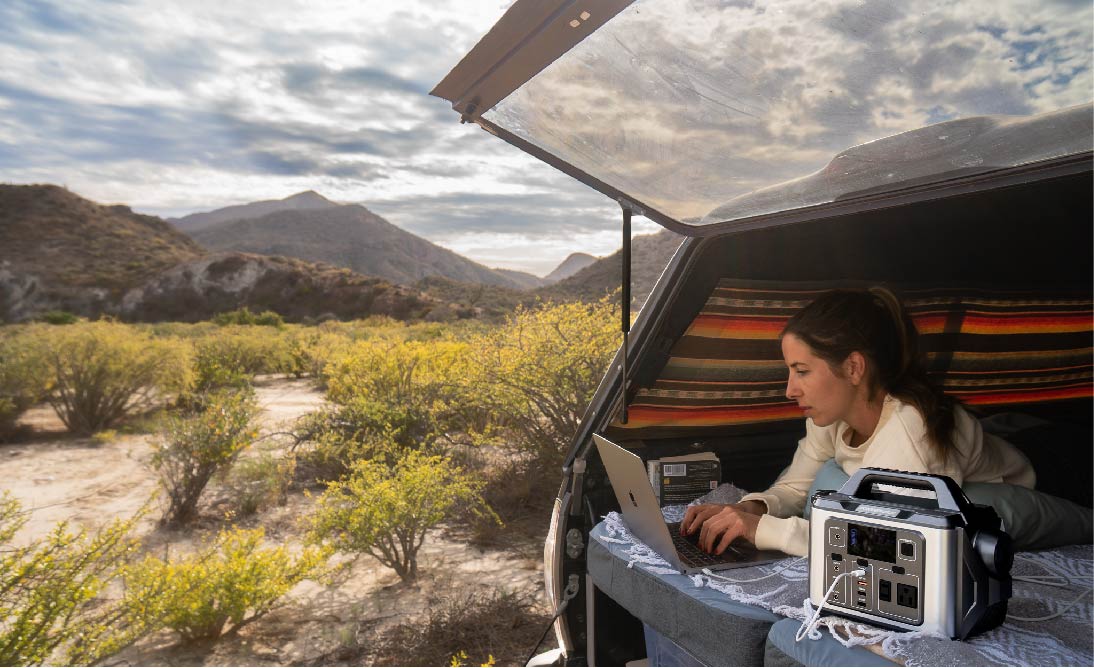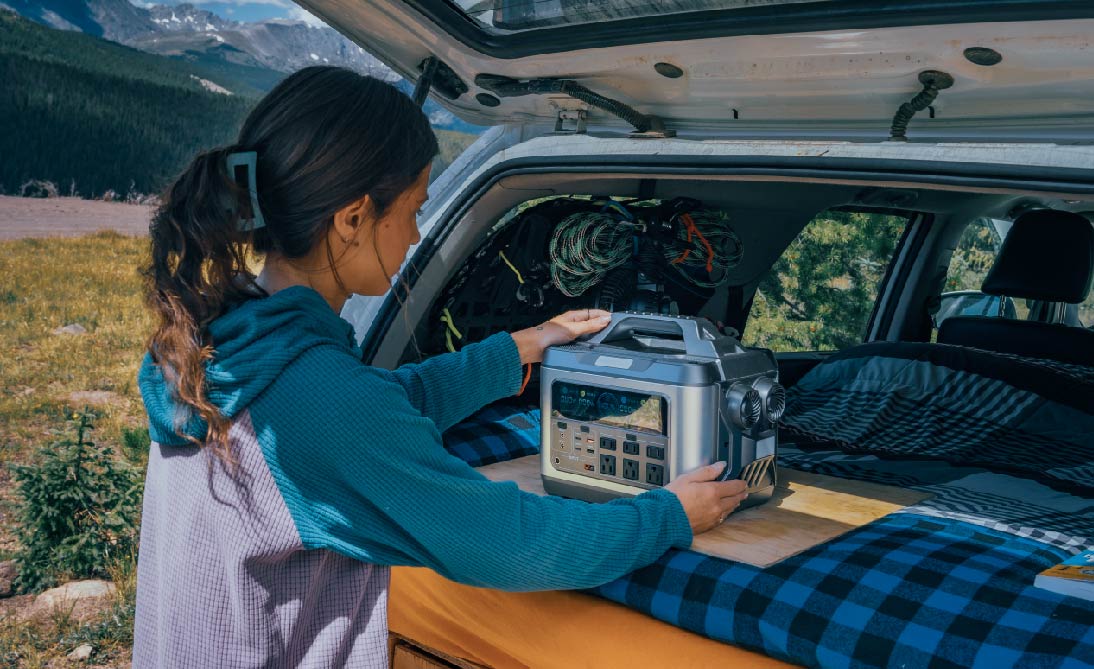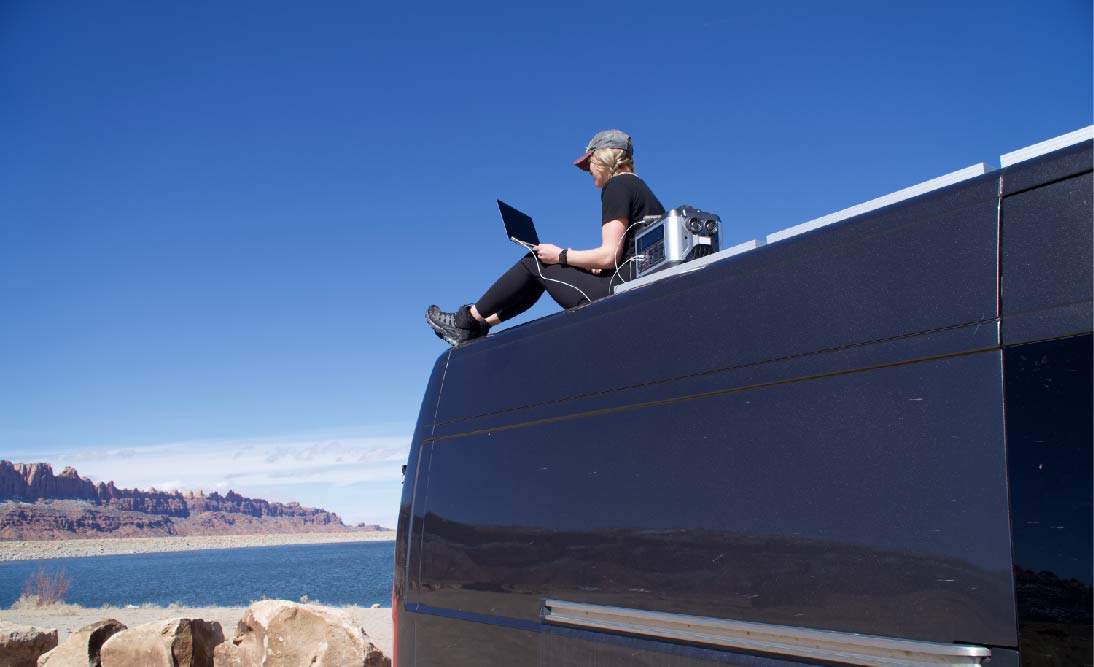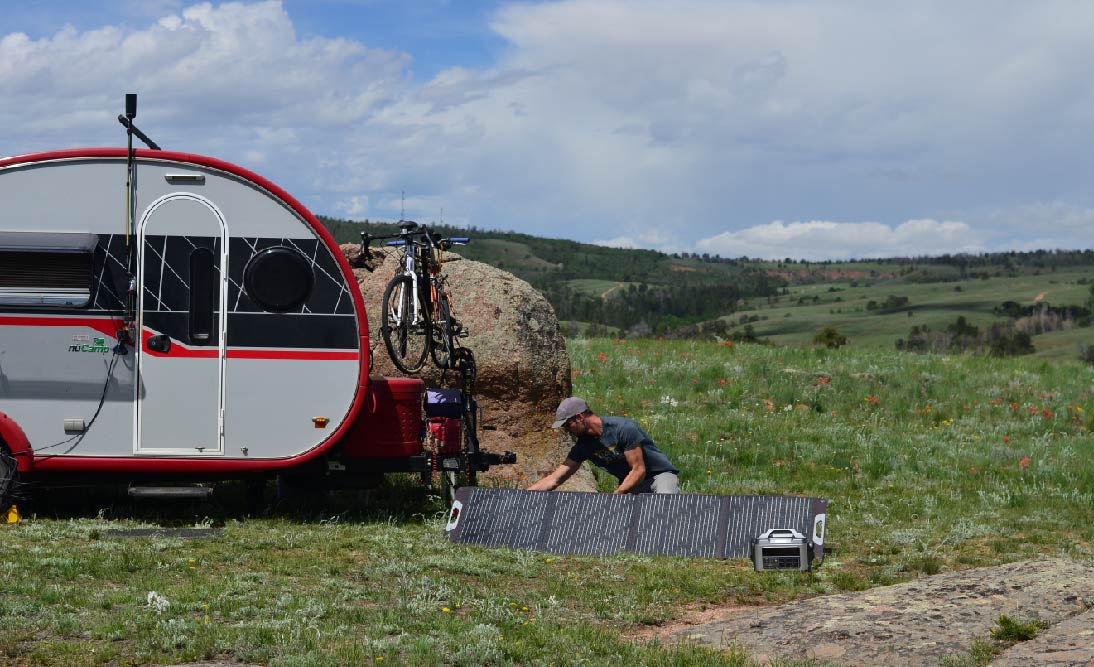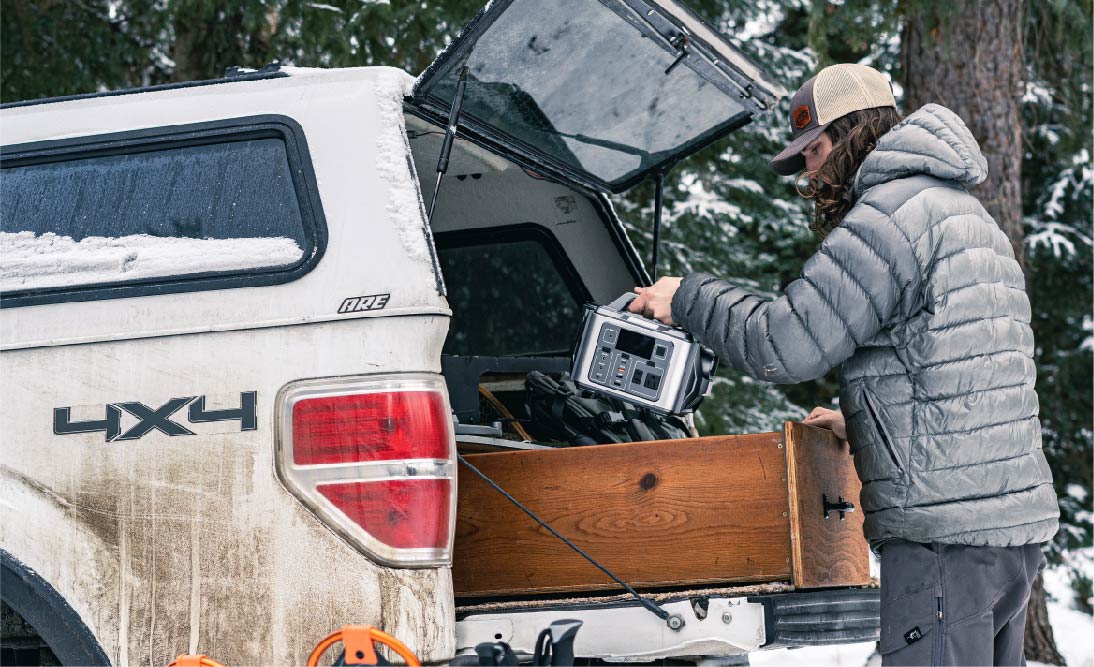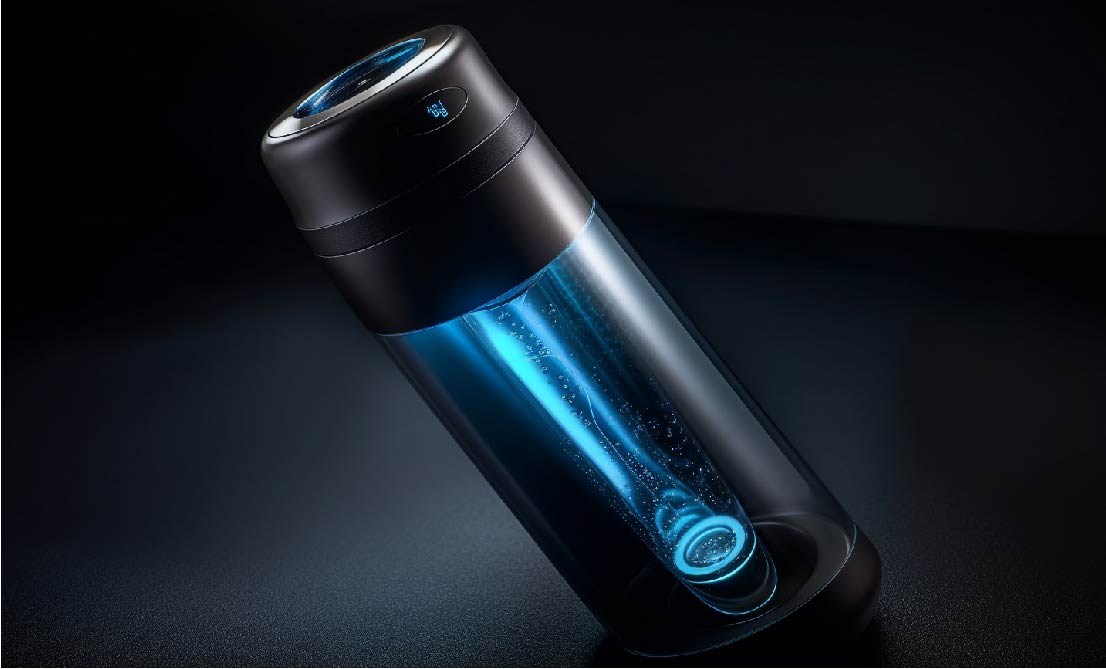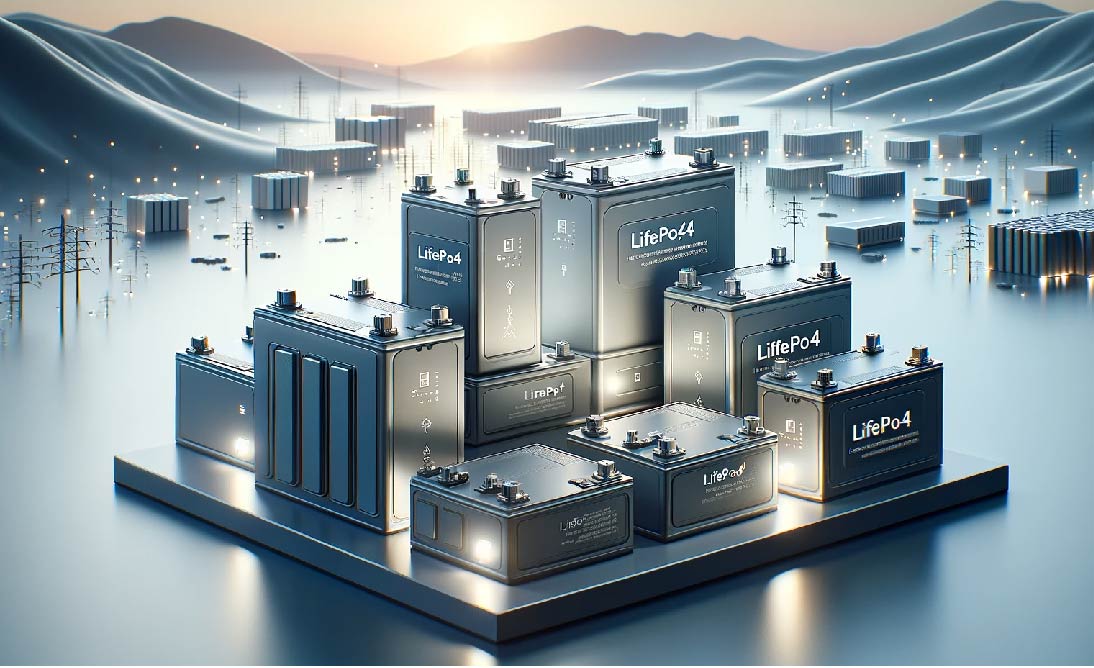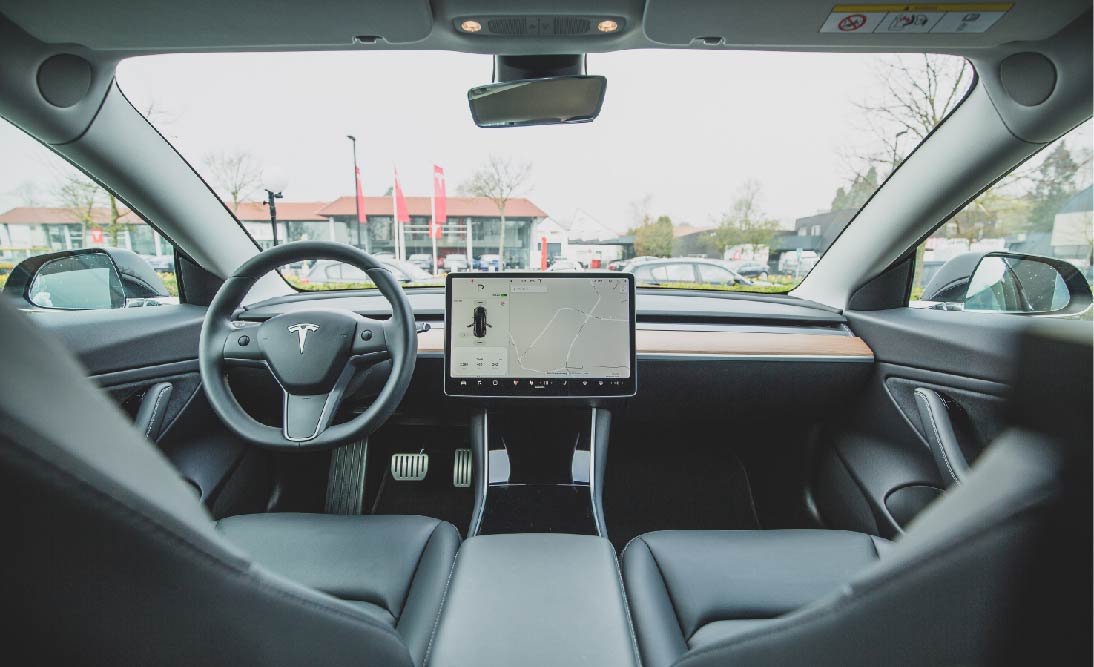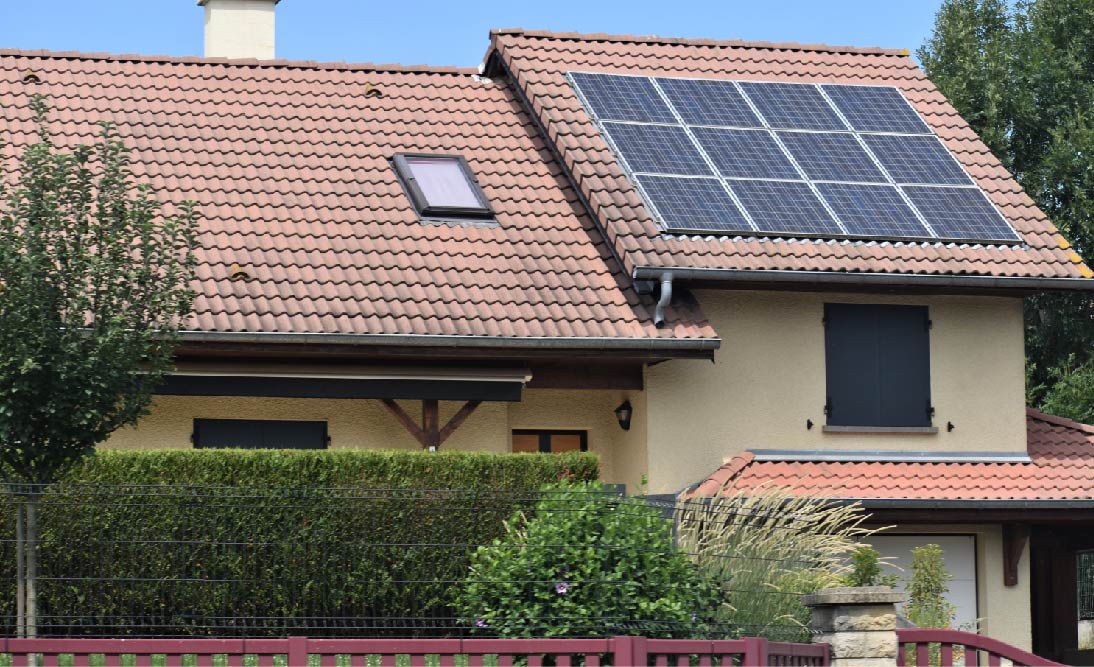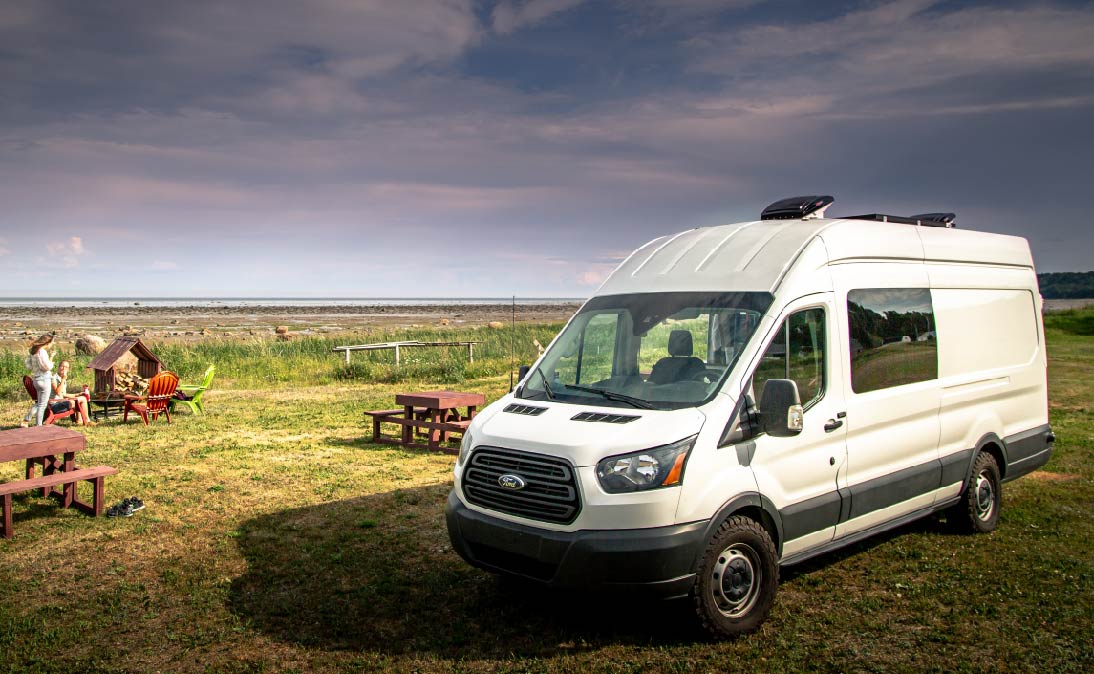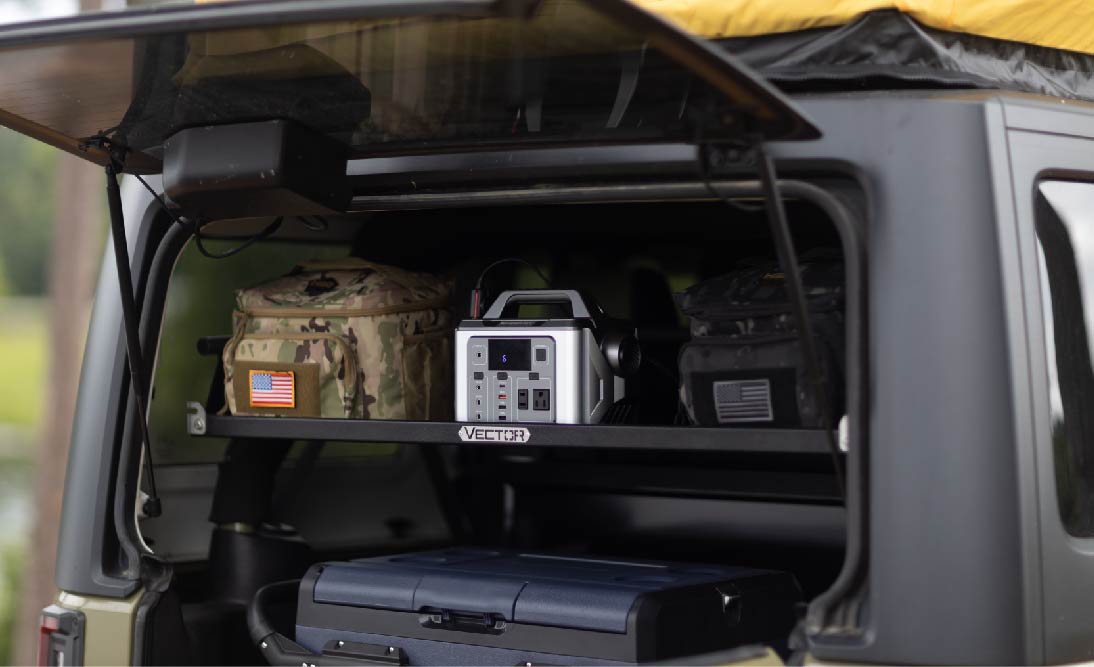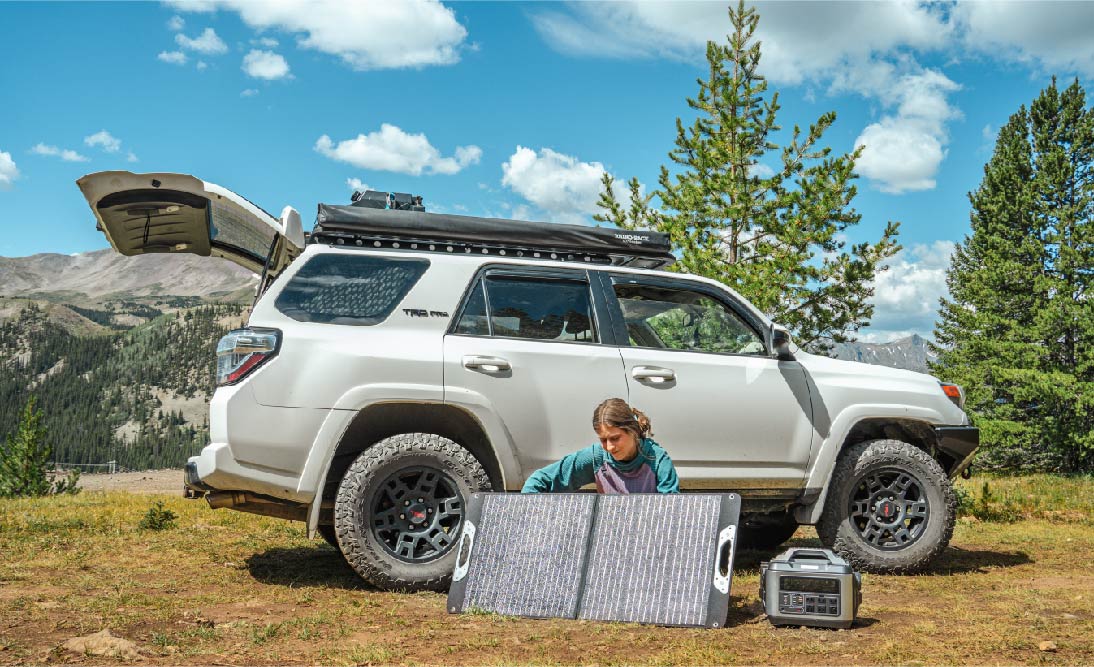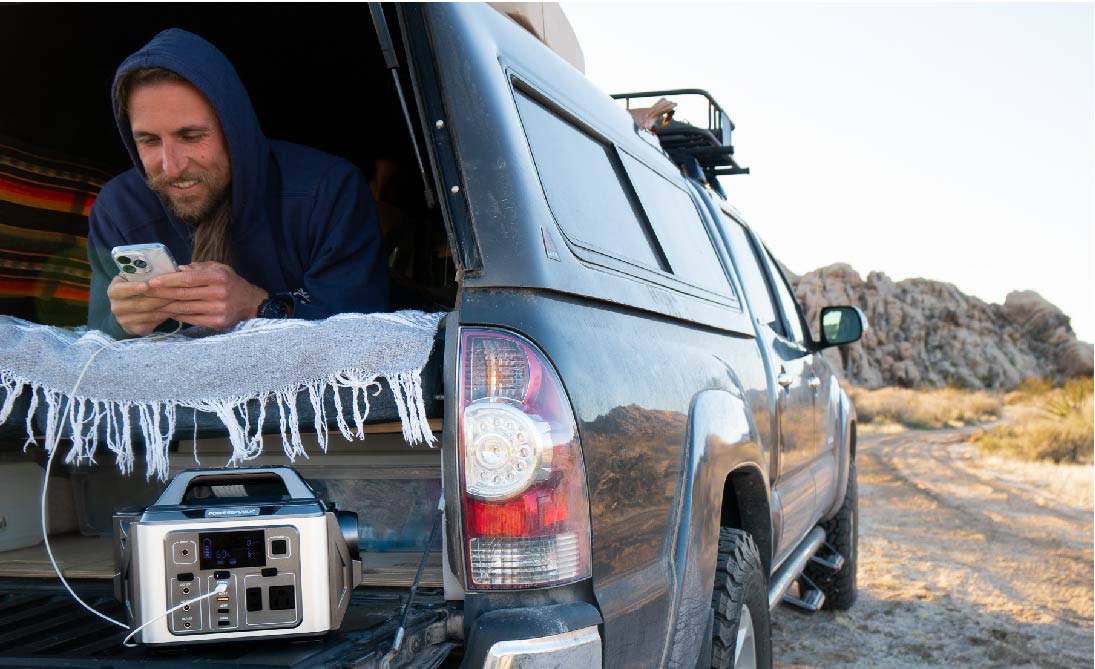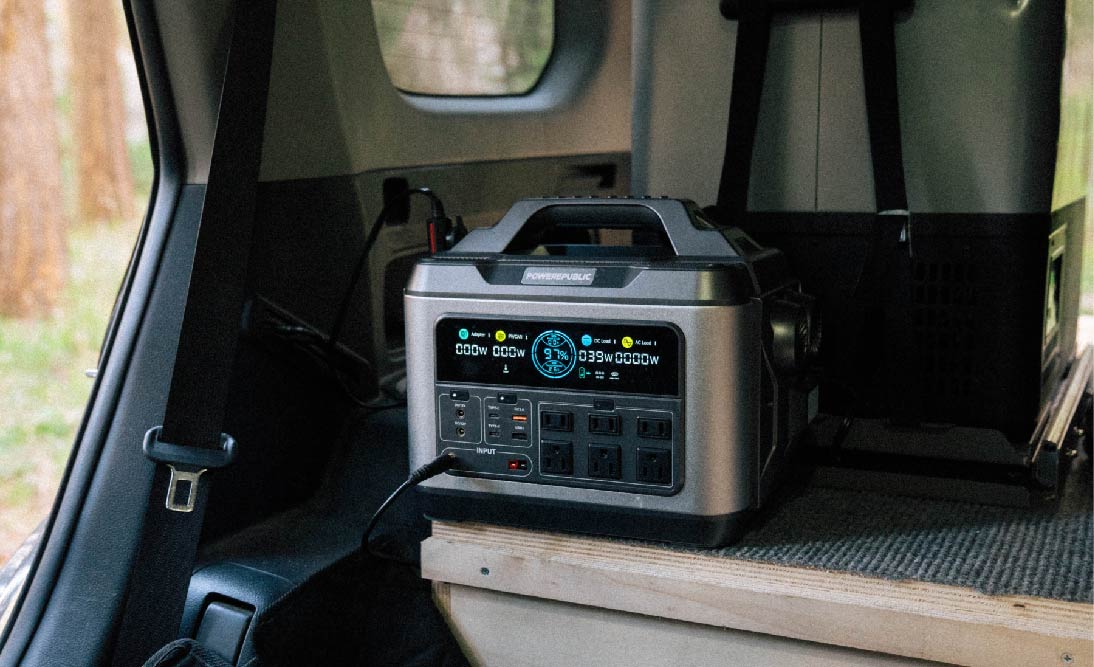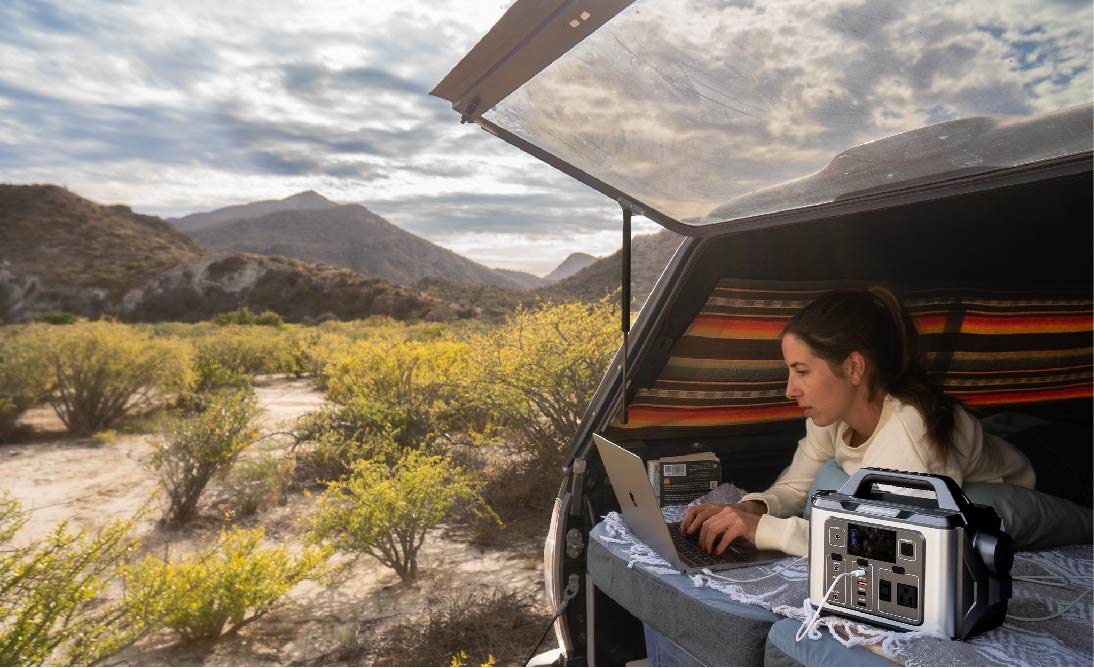Table of Contents:
-
3000W Portable Power Station as a House Battery Backup without Solar
-
POWEREPUBLIC T3000 Model as a House Battery Backup without Solar
-
FAQ II: Can I Charge and Recharge a Portable Power Station at the Same Time?
-
FAQ III: Can I Use a Portable Power Station as a UPS(Uninterruptible Power Supply)?
Many of you know the importance of having a house battery backup system during power outages or extreme weather. Setting up such a system requires professional knowledge and time. However, in this discussion, we won't delve into the complexities of a complete system. Instead, we'll focus on an alternative: house battery backup without solar. We'll show you how to effectively utilize a 3000W portable power station to charge your devices and appliances during blackouts. What's even more important is that it's a time-saving and budget-friendly option compared to the installation of an entire system.
If you're interested in a solution like this, you've come to the right place.
House Battery Backup without Solar: What You Need To Know?

What is a House Battery Backup Without Solar?
House battery backups without solar are standalone energy storage systems designed to provide backup power to homes during blackouts or emergencies. Unlike solar battery systems, they don't rely on solar panels to charge; instead, they are typically charged from the grid or other power sources and store electricity for later use.
What Can You Do with a House Battery Backup Without Solar?
House battery backups without solar have several practical applications:
-
Emergency Power: They ensure a continuous power supply to keep essential appliances and devices running during power outages.
-
Time-of-Use Savings: You can charge the battery during off-peak hours when electricity rates are lower and use the stored energy during peak hours to save on energy costs.
-
Grid Support: Some systems offer grid support features, allowing you to sell excess energy back to the grid during peak demand periods.
-
Backup for Solar Homes: Even homes with solar panels can benefit from an additional battery backup to store excess solar energy for nighttime use or extended outages.
Why Do You Need a House Battery Without Solar?
There are several reasons why having a house battery backup without solar is beneficial:
-
Reliable Power: It ensures uninterrupted power supply during blackouts, safeguarding your home and family.
-
Energy Cost Savings: By utilizing stored energy during peak rate hours, you can reduce your electricity bills.
-
Environmental Impact: Using stored electricity during peak hours can help reduce strain on the grid and decrease reliance on fossil fuels.
-
Peace of Mind: Knowing you have a backup power source in emergencies provides peace of mind and enhances your overall quality of life.
Can Portable Power Stations Function Like a House Battery Backup Without Solar?
Yes, portable power stations can indeed function as a form of house battery backup without solar. These versatile devices come equipped with rechargeable batteries and multiple outlets, making them suitable for various applications. While they may not offer the same capacity as dedicated home battery backup systems, they can provide emergency power during outages or be used for specific appliances and devices.
Portable power stations are a practical solution for those who want a more budget-friendly and flexible option for backup power. They are easy to transport, making them suitable for outdoor activities, camping, and as a temporary backup for essential home appliances.
Overall, portable power stations can serve as a house battery backup without solar, offering a portable and convenient source of backup power for various needs.
Pros and Cons of a House Battery Backup without Solar

A house battery backup without solar offers reliable backup power at a lower upfront cost and is easier to install. However, it may have limitations in terms of capacity and long-term operating costs when compared to solar-powered systems with battery storage. The choice between the two depends on your needs, budget, and environmental considerations.
Pros of a House Battery Backup Without Solar:
-
Reliable Backup Power: Provides a dependable source of backup power during blackouts or emergencies, ensuring your essential appliances and devices continue to function.
-
Cost-Effective: Generally more budget-friendly than installing a complete solar-powered system with battery storage.
-
Grid Independence: Reduces your reliance on the grid, allowing you to use stored energy during peak hours or when grid power is unavailable.
-
Easy Installation: Typically easier to install and set up compared to a full solar battery system, making it accessible to a wider range of homeowners.
-
Versatility: Can be used as a portable power source for outdoor activities, camping, or as a temporary backup for specific household devices.
Cons of a House Battery Backup Without Solar:
-
Limited Capacity: House battery backups without solar may have limited storage capacity compared to larger solar battery systems, which means they can power fewer devices for a shorter duration.
-
Dependent on Grid Charging: These systems rely on the grid or other power sources for charging, which means they might not be as suitable in areas with frequent power interruptions or when grid power is unavailable for an extended period.
-
Higher Operating Costs: Charging the battery during peak electricity rate hours may lead to higher operating costs over time compared to a solar-powered system that generates free energy from the sun.
-
Environmental Impact: While they are more environmentally friendly than relying solely on fossil fuels during outages, they still depend on grid electricity, which may not be entirely green in some regions.
3000W Portable Power Station as a House Battery Backup without Solar

What is a 3000W Portable Power Station?
A 3000W portable power station is a compact, rechargeable device equipped with a built-in battery and multiple power outlets. It is designed to supply electrical power for various applications, both indoors and outdoors. The "3000W" rating indicates the power station's maximum output capacity, which is 3000 watts. This capacity allows it to run a range of household appliances and electronics during power outages or in remote locations.
Can a 3000W Portable Power Station Function Like a House Battery Without Solar?
Yes, a 3000W portable power station can function as a house battery backup without solar.
Here's how:
Example Scenario: Let's say you have a 3000W portable power station, and you want to power a few essential appliances during a power outage.
Calculations:
-
You have a refrigerator (700W), a laptop (60W), and some LED lights (40W).
-
The total power requirement would be 700W + 60W + 40W = 800W.
In this scenario, the 3000W portable power station is more than capable of handling the load, as it provides up to 3000 watts of power. You can comfortably run all these devices simultaneously.
What to Pay Attention to While Using a 3000W Portable Power Station as a House Battery Backup Without Solar (With Examples or Calculation):
-
Capacity vs. Load: Ensure that the total wattage of the devices you intend to power during an outage does not exceed the power station's rated capacity. For example, if you have a 3000W power station and you plan to run a microwave (1200W), a TV (150W), and a phone charger (10W), the total load is 1200W + 150W + 10W = 1360W, which is well within the capacity of the power station.
-
Runtime Calculation: To estimate how long your power station can run your devices, consider the power station's capacity (in watt-hours, Wh) and the energy consumption (in watts, W) of your devices. For instance, if your 3000W power station has a 3000Wh capacity and you're using a device that consumes 100W, the runtime would be approximately 3000Wh / 100W = 30 hours.
-
Recharging Time: Be aware of the recharging time for the power station. For example, if your power station takes 8 hours to recharge fully and you anticipate frequent outages, plan accordingly to ensure it's ready for the next use.
-
Maintenance: Regularly check the battery's charge status, and follow the manufacturer's recommendations for maintenance. For example, ensure that the power station is charged to at least 50% capacity between uses to prolong battery life.
-
Safety and Compatibility: Use appropriate extension cords, surge protectors, and adapters to ensure safe and compatible connections for your devices. Avoid overloading the power station beyond its rated capacity.
Pros of Using a 3000W Portable Power Station as a House Battery Backup Without Solar:
-
Reliable Backup Power: Portable power stations offer a dependable source of backup power during outages or emergencies, ensuring that essential appliances and devices remain functional.
-
Versatile Application: These power stations can supply electricity to a wide range of devices, including refrigerators, laptops, lights, and more, making them suitable for various household needs.
-
Ease of Use: They are user-friendly and require minimal setup. You can have backup power available within seconds by plugging devices directly into the power station's outlets.
-
Quick Activation Example: Suppose you have a 3000W power station and you want to power a refrigerator (700W), a laptop (60W), and some LED lights (40W) during a power outage. The total load is 700W + 60W + 40W = 800W, well within the power station's capacity.
-
Portability: The compact and portable nature of these stations allows for flexibility in placement and use, making them suitable for both home and outdoor activities.
Cons of Using a 3000W Portable Power Station as a House Battery Backup Without Solar:
-
Limited Capacity: Portable power stations have a finite capacity, and their runtime depends on the devices connected. For example, suppose you're using a 3000W power station and you're powering devices that collectively draw 2000W. In that case, the runtime can be estimated as Runtime (hours) = Power station capacity (Wh) / Total power draw (W) Runtime = 3000 Wh / 2000W = 1.5 hours. In this scenario, the power station can provide backup power for approximately 1.5 hours.
-
Recharging Time: Recharging a power station can take several hours, so planning for extended outages may require additional backup power sources or alternative energy solutions. For instance, if your power station takes 8 hours to recharge fully and you anticipate frequent outages, you'll need to ensure it's recharged well in advance of the next outage.
-
Cost Consideration: High-capacity power stations, like 3000W models, can be relatively expensive. The cost may vary depending on the brand and features. Users should weigh the initial investment against their backup power needs.
-
Environmental Impact: While portable power stations are more environmentally friendly than traditional generators, they rely on electricity from the grid for recharging. The environmental impact may vary depending on the energy source of the grid.
-
Compatibility: Users should ensure their devices and appliances are compatible with the power station's outlets and capacity. Sensitive electronics may require additional protection, such as surge protectors.
By paying attention to these factors and performing calculations as needed, you can effectively use a 3000W portable power station as a house battery backup without solar to meet your specific power needs during an outage.
POWEREPUBLIC T3000 Model as a House Battery Backup without Solar

Based on the discussions above, we now have a comprehensive understanding of every aspect of a house battery backup without solar and the potential of using a 3000W portable power station as a house battery backup without solar.
With that in mind, we recommend the POWEREPUBLIC T3000 portable power station as an excellent choice for a house battery backup without solar. The T3000 model boasts ample power capacity to keep nearly 95% of household devices and appliances charged. Moreover, it offers compatibility with solar charging, providing you with an additional sustainable energy option.
For a more detailed insight into the functionality of the T3000 model, please refer to the table below:
|
Model |
Important Features |
Est.Working Time(hours) |
|
Capacity: 3200Wh Output Power: 3000W, 6000W Surge Ports: 15 Output Ports Battery Type: LiFePO4 Batteries, 3000+ Cycles to 80% of the Original Capacity Dimension: 18.3*11.8*14.5 inch Weight: 88Ibs/40Kg Recharging: Via an AC Adapter(500W), a Solar Panel(230W Max), or a Car Charger Additional Features:
|
Note That: Est.Working Time=Capacity(Wh) * 0.85 / Power Of the Item(W) 1. Microwave (1000W): 2.7 hours 2. Hair Dryer (1500W): 1.8 hours 3. Toaster (1200W): 2.3 hours 4. Coffee Maker (900W): 3 hours 5. Vacuum Cleaner (1200W): 2.3 hours 6. Iron (1500W): 1.8 hours 7. Space Heater (1500W): 1.8 hours 8. Blender (800W): 3.4 hours 9. Electric Kettle (1500W): 1.8 hours 10. Washing Machine (1200W): 2.3 hours 11. Home-Sized Refrigerator(800W): 3.4 hours 12. Mini-Fridge(100W): 27.2 hours 13. TV(90W): 30 hours 14. Etc... |
The table above provides estimations for the power requirements of devices and appliances. However, in practice, it's crucial to verify both the running and starting watts of these devices and appliances before using the T3000 model. It's essential to ensure that the running watts do not exceed 3000W, and the starting watts do not exceed 6000W.
Please note that the wattages listed for the devices and appliances are approximate. For precise information, refer to the user manuals of these devices. Additionally, the operation time mentioned is based on the assumption that the T3000 portable power station is fully recharged to 100% battery level. In real-life scenarios, the operation time may vary depending on the actual battery level and the condition of the portable power station.
It's always advisable to check the specific requirements and conditions to accurately estimate the performance of the T3000 portable power station. Overall, the POWEREPUBLIC T3000 portable power station would be an excellent house battery backup solution without solar.
FAQ I: How Many Years Can I Use a Portable Power Station?

Answer: The lifespan of a portable power station can vary depending on factors like usage patterns, maintenance, and the quality of the unit. In general, a well-maintained portable power station can last for several years. Here's a rough estimate with an example:
Example: Let's say you have a high-quality portable power station, and you use it moderately, discharging and recharging it fully once a week. Such usage patterns are relatively gentle on the battery.
-
Typical battery cycle life: 500-1000 cycles
-
Charging and discharging once a week: About 52 cycles per year
In this scenario, the power station could potentially last between 9 to 19 years (500 cycles / 52 cycles/year = 9.6 years, 1000 cycles / 52 cycles/year = 19.2 years).
FAQ II: Can I Charge and Recharge a Portable Power Station at the Same Time?

Answer: In most cases, portable power stations are designed to handle both charging and discharging simultaneously, allowing you to use the power station while it's being charged. However, it's essential to ensure that the power station supports this feature, as not all models do.
Example: You have a portable power station with a solar panel input and multiple output ports. You can connect the solar panel to the input and charge the power station while simultaneously using the power station's AC outlets to power devices like a laptop, TV, refrigerator, electric blanket, and lights. This is particularly useful for off-grid or outdoor activities where a continuous power supply is needed.
FAQ III: Can I Use a Portable Power Station as a UPS(Uninterruptible Power Supply)?

Answer: Yes, many portable power stations can be used as a makeshift UPS to provide backup power during brief power interruptions. However, they may not be suitable for extended outages that last for hours.
Example: Suppose your desktop computer (300W) is connected to a portable power station, and the power station is plugged into the wall for charging. If there's a short power outage, the power station will continue to supply power to the computer, preventing data loss or disruption. However, the runtime will be limited by the power station's battery capacity and may not last as long as a dedicated UPS designed for longer outages.
It's essential to check the specifications and capabilities of your specific portable power station to determine its suitability for use as a UPS and its estimated runtime during power interruptions.
Conclusion: Embracing House Battery Backup Without Solar
In conclusion, adopting a house battery backup without solar is an innovative and effective solution to ensure continuous power supply during unexpected outages or emergencies. The concept revolves around utilizing standalone energy storage systems, such as the 3000W portable power stations, which provide a reliable, cost-effective, and environmentally conscious alternative to traditional backup methods.
The POWEREPUBLIC T3000 model stands out as a prime example, offering substantial capacity and versatility to power a wide range of household appliances. Its ability to function as a UPS, coupled with features like simultaneous charging and discharging, demonstrates the practicality and convenience of such systems.
Moreover, the flexibility and ease of installation of these battery backups make them an attractive option for a broad spectrum of users, from those living in areas prone to frequent power interruptions to environmentally conscious individuals seeking to reduce their carbon footprint. The ability to charge these units during off-peak hours and use the stored energy when needed aligns with both economic and ecological goals.
In essence, a house battery backup without solar represents a forward-thinking approach to energy management, offering peace of mind and security in an increasingly unpredictable world. As technology evolves, we can anticipate further advancements in this field, making these systems even more efficient and accessible to homeowners seeking reliable and sustainable power solutions.
